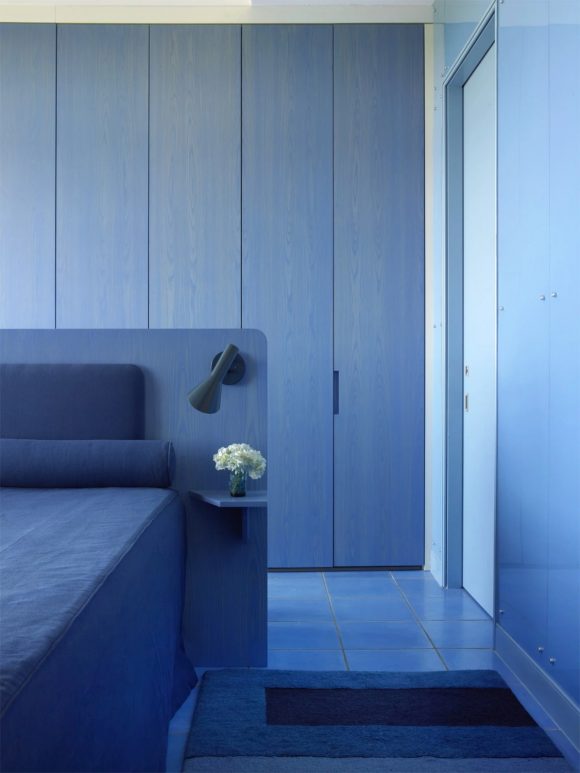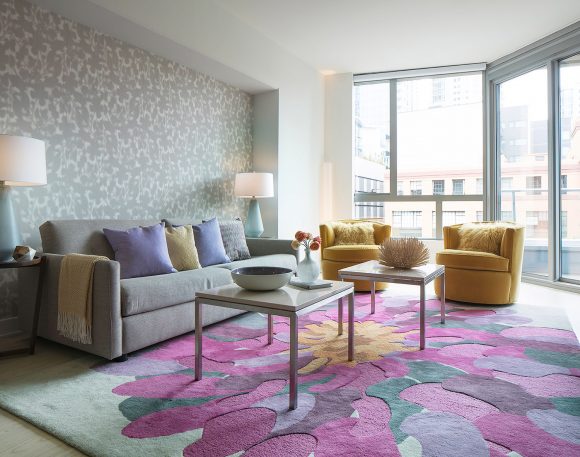Combine Color Creatively

When you look through my interior design portfolio, one thing that new clients often mention attracted them is my use of color combinations. I’m confident in using color boldly to transform interior spaces, and I can help you gain color confidence, too. Here’s a peek into my process.
Monochromatic Color Scheme

One of the simplest ways to be assured your colors will go together is by using variations of the same color, just in different values or tints, called a monochrome. Monochromatic designs often use neutrals such as grey or tan, but could just as easily be made with blue.

The key to this type of color combination is to create a balance by using several variations of your main color, then just a pop of a contrasting color to give it life, such as shades of light and dark grays accented with a touch of lime green.

In the kitchen above, designed for a San Francisco bachelor who wanted something timeless and chic, variations of grey upper and lower cabinetry with silver drawer pulls, stainless steel appliances, and sleek subway tiles work together to provide a soothing backdrop, so the fruit and green glass bottle on the counter really stand out, as would any fresh food you’re preparing and serving.
Complementary Colors

Another easy combination is complementary colors. Primary colors, which are yellow, red, and blue, are the building blocks for creating all other colors. Specific paint mixture combinations of two primary colors will create the secondary colors of either green, orange, or purple. A complementary color scheme is defined as a primary color matched with its secondary color shown directly across from it on the color wheel.

Pairing a primary with its complementary color creates a harmonious balance. For example, red and green, which we use often for Christmas and holiday traditions. Yellow and purple is bright and energetic, seen in sports teams and also as a trending interior design combination this year. Blue and orange is so popular in graphic design and color correction for film and television that there are whole YouTube essays about this combination, and why we’re attracted to it.

The Bay Area farmhouse kitchen above is a good example of blue and orange, where the orangey color of the wood stands in a for a true orange. It’s important to work with the dominant color and features in your home, to enhance the beauty instead of fighting it. This home has a very cabin-y feel with all the exposed knotty wood, but the blue color complements the wood comfortably, making it feel both homey and modern.
Split Complementary

A more advanced combination is that of split complementary, where you select two colors that are one color apart from each other on the wheel, and then one directly across from those.

In the design above, chartreuse, teal, and pink combine beautifully to exude both calm and energy simultaneously. Below is an example of a split complementary scheme of red, orange, and pale turquoise, found in the chandelier, which also picks up the bluish undertones of the wall color.

In my own design below, lilac and fuchsia with a splash of yellow liven up foggy San Francisco days. Don’t forget that color has a strong effect on mood, so pick something you love to fill your home with joy.

If you want to use color boldly, work with Kimball Starr Interior Design! She creates beautiful homes in the San Francisco Bay Area and Lake Tahoe. Contact her today for a socially-distanced in-person or remote consultation.













